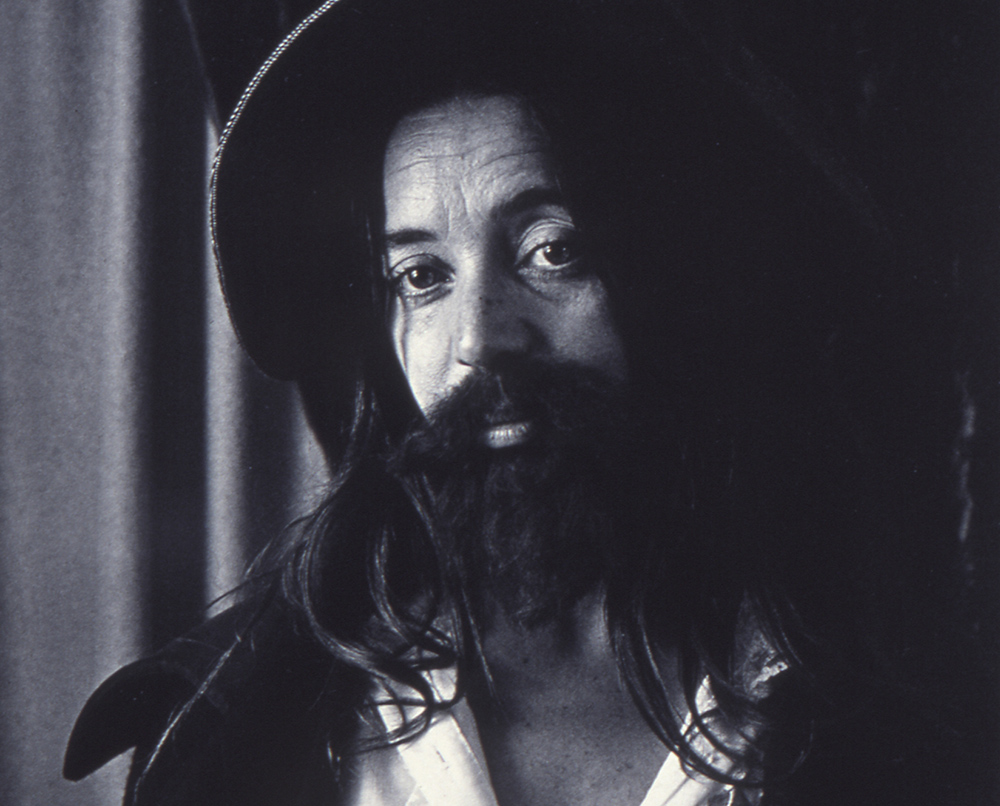
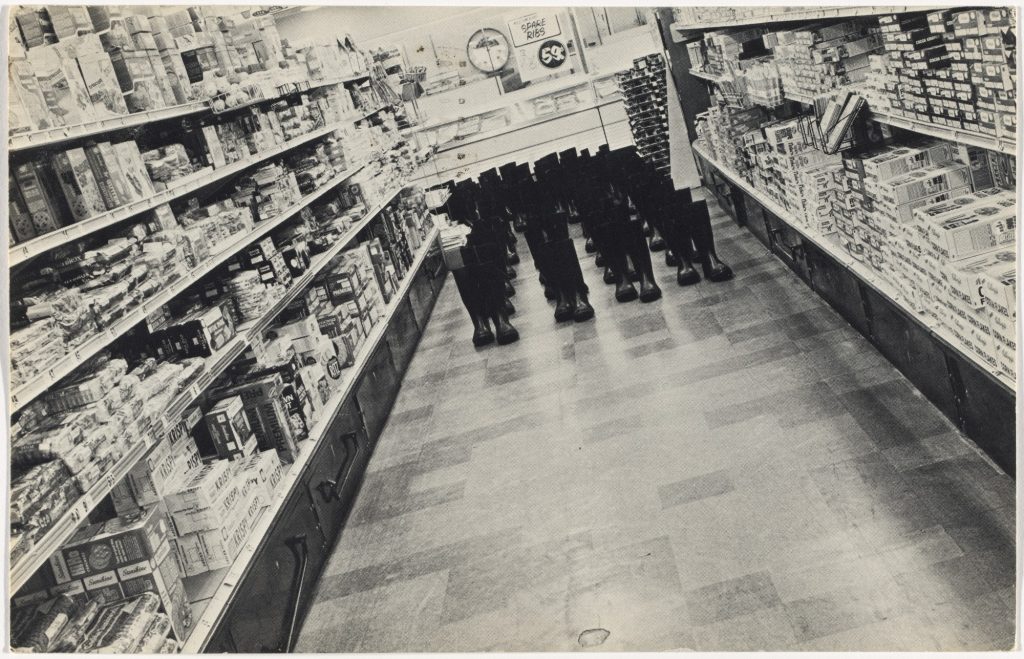
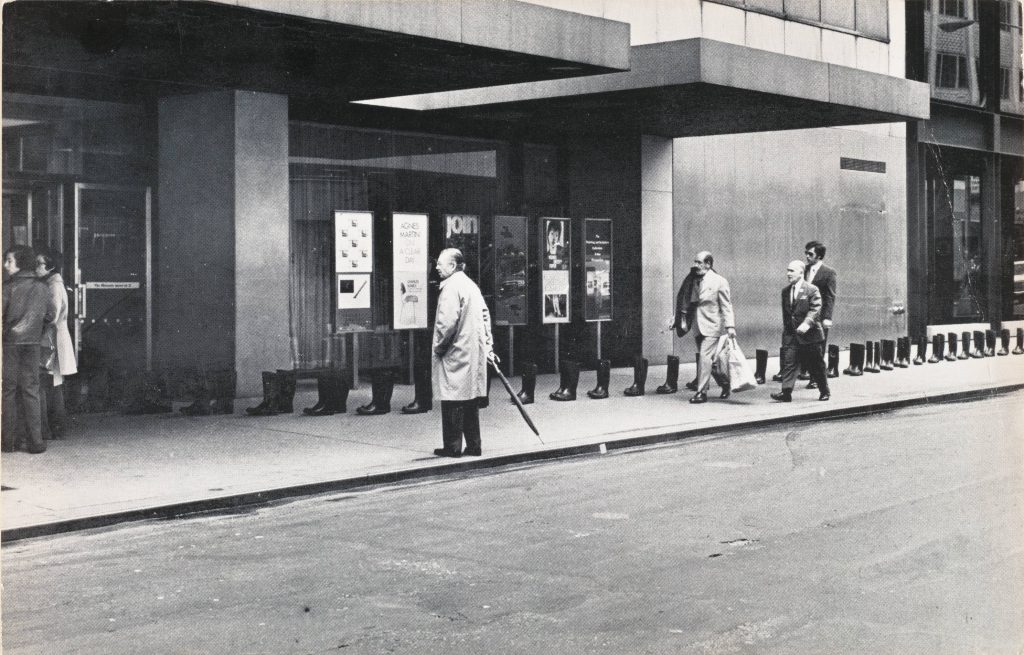
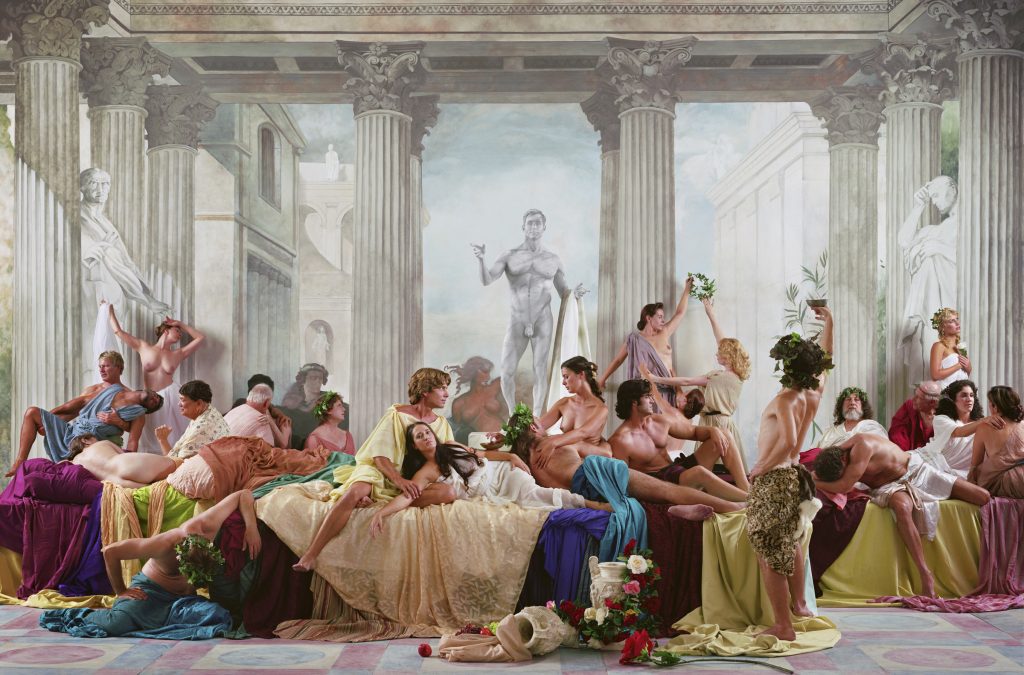
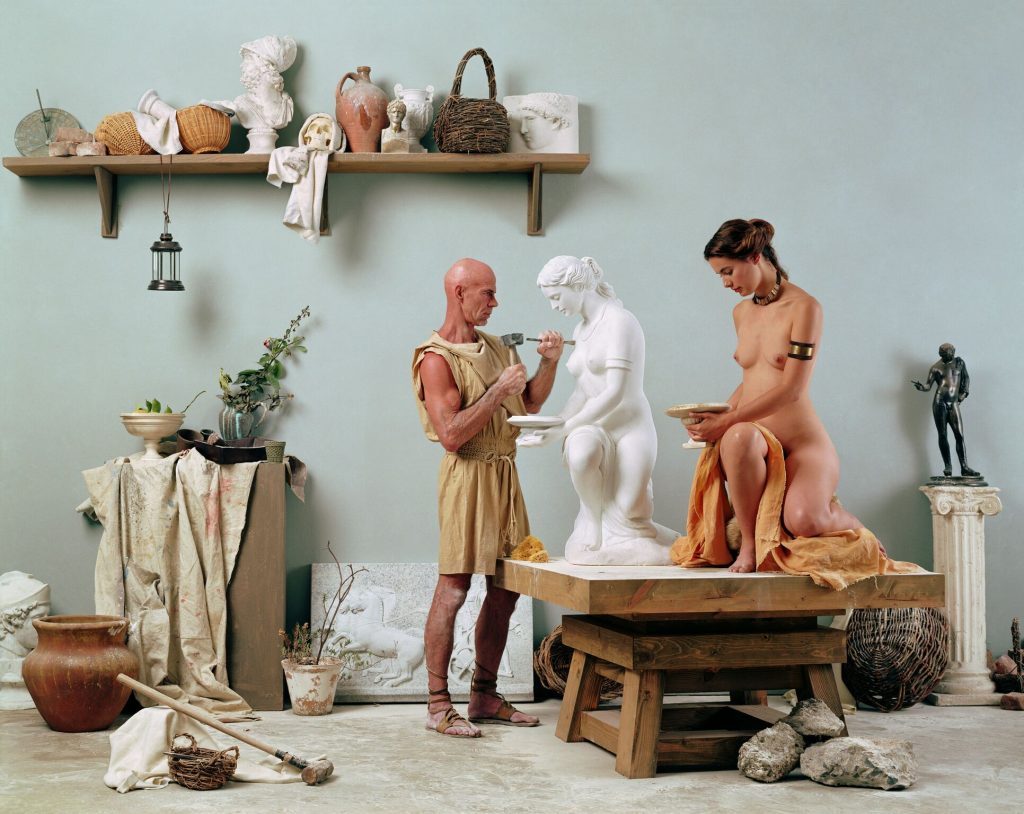
Chromogenic print. Paper: 78.7 x 63.5 cm. Image: 76.2 x 45.7 cm
Image courtesy of Richard Saltoun Gallery, 2017.
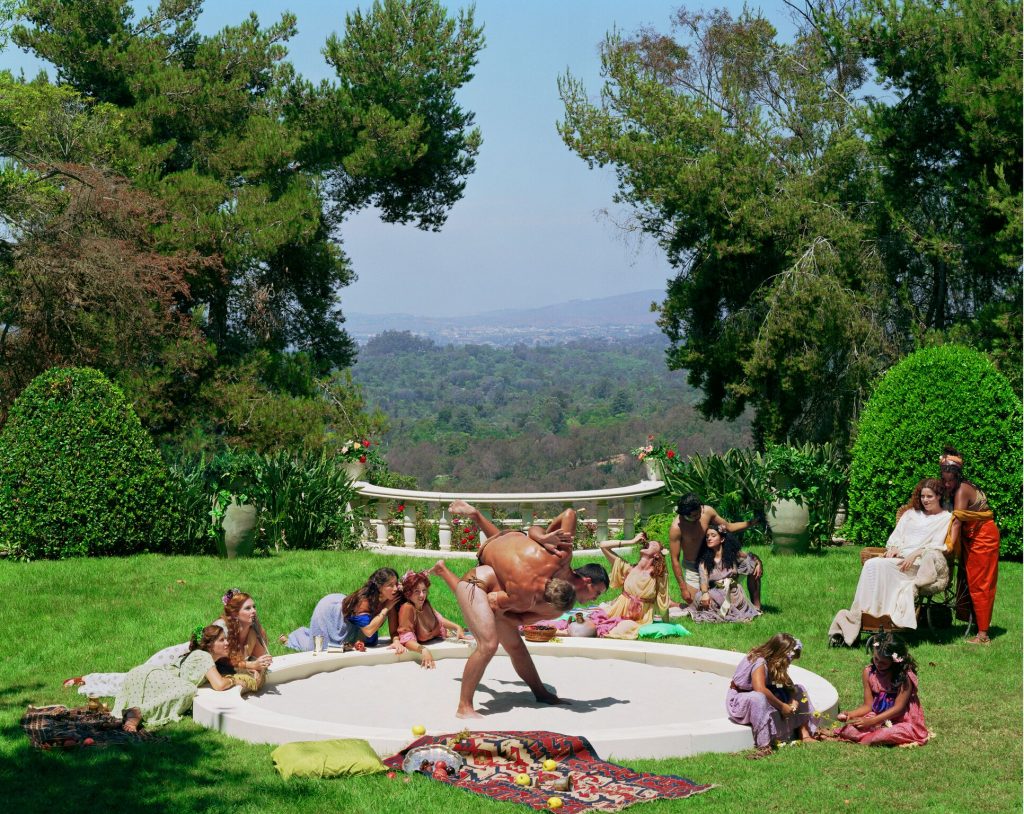
Chromogenic print. Paper: 78.7 x 63.5 cm. Image: 76.2 x 45.7 cm
Image courtesy of Richard Saltoun Gallery, 2017.
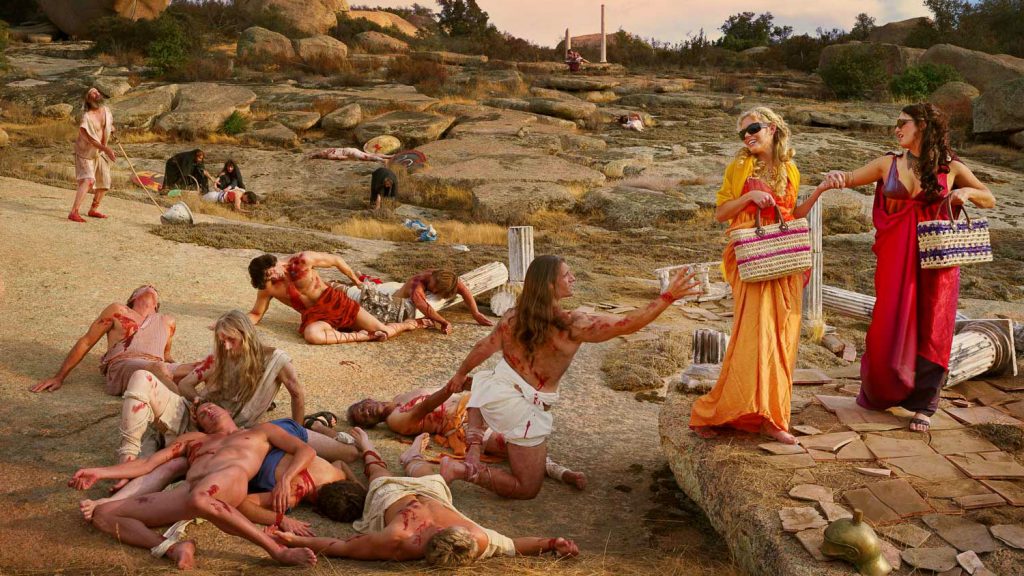
Born in 1935, Eleanor Antin has become a cultural icon when it comes to recreating scenes from history with a current social commentary. Before photography and other forms of art, Antin was a poet and an actress that became fascinated by the Yiddish theater and other artists such as Marcel Duchamp and Fluxus. She later moved to San Diego in 1969 where she became involved in an arts and education center in LA along with in the local feminist movement. Antin also became a key figure in the community of leftist artists and writers who were affiliated with the University of California at San Diego, where she taught from 1975 to 2002.
Through the 1970’s and into the 90’s, Eleanor created different egos that had different genders, races, professions and were even from different eras. These different versions of herself later influenced her photographs in the early 2000’s that depict photographic tableaux, or a living picture. These images are often historical recreations of scenes with a modern twist, or at least provide commentary on current social issues. Emily Liebert of moma.org says, “In transforming herself into one character after another, she performed the proposition that gender, class, and racial identity are fluid. If such categories are unstable, the works suggest, then so too must be the social hierarchies that are built upon them.”